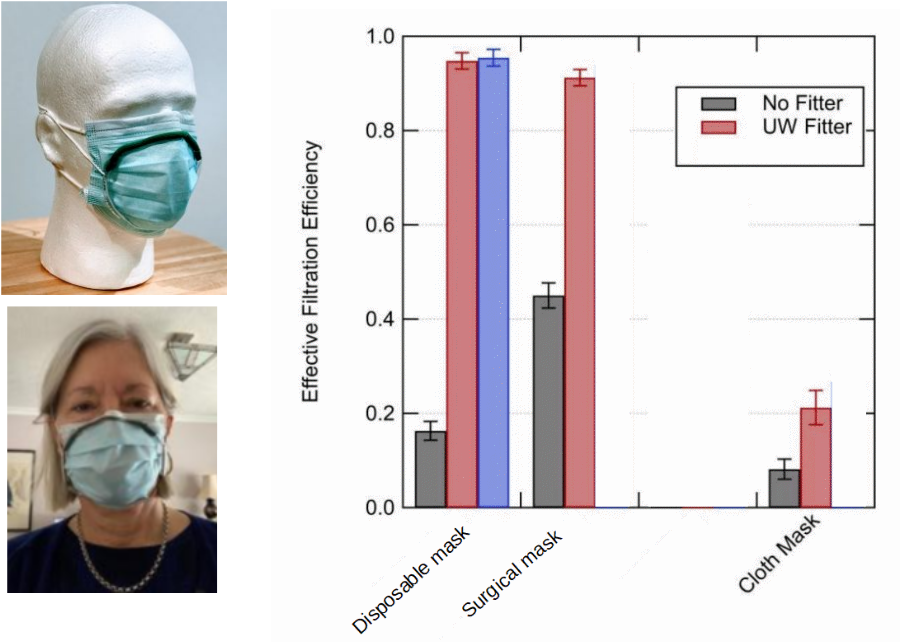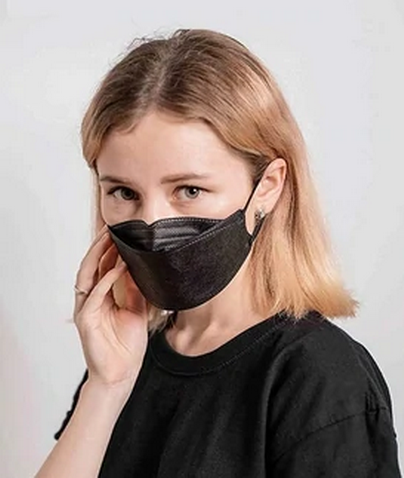by Randy Park
(Disclaimer: I am not a expert in this topic, I present this information after having done a significant amount of research on the topic in the hope it is useful)
Current expert consensus is that better masks are now required whenever possible. There are two components to better masking: Better filtration and Better fit.
From a recent CBC report https://www.cbc.ca/news/health/masks-coronavirus-variants-canada-1.5890893 Linsey Marr, one of the top aerosol scientists in the world and an expert on the airborne transmission of viruses at Virginia Tech, says a cloth mask can “easily filter out half of particles, maybe more, but we’re at the point where we need better performance.”
Erin Bromage, a biology professor and immunologist at the University of Massachusetts, Dartmouth who studies infectious diseases, says “The most important part is you’ve got to make sure your breath actually goes through the material. … You really should see the mask expand and then collapse and expand and collapse with each breath that you take. That’s a good indication that what you’re breathing is actually going through the material.”
A good mask fit also helps reduce the fogging of glasses. The CDC discusses mask fitting here https://www.cdc.gov/coronavirus/2019-ncov/your-health/effective-masks.html and outlines three common ways to get a good mask fit:
1. start with a high-quality mask that fits well, with air going through the material rather than out the sides – these are commonly N95, KN95, and KF94 masks (see below for CBC testing)
2. double masking with a cloth mask over a surgical mask; double-masking helps the mask that is closest to your skin fit more snugly, meaning more air goes through that mask. The surgical mask provides better filtering of aerosols that the cloth mask alone.
3. wear a “mask fitter” or “mask sealer”, a frame that fits on top of your mask and holds a surgical mask tight to your face. These can be easily made using the instructions here https://making.engr.wisc.edu/mask-fitter/ and have been shown to improve the performance of “medical” masks by 3x.

N95, KN95, KF94 masks
CBC in conjunction with University of Toronto’s Dalla Lana School of Public Health did a study on mask effectiveness. The full report is at https://www.cbc.ca/news/canada/mask-filtration-standards-marketplace-1.5974442
(One of the tested masks that received high marks is available from a distributor in Mississauga, Ontario. I bought a pack of these and found that because of the design they fit very well, and they are reasonably priced. Distributor web site is https://clearmaskpro.ca/collections/kf94-masks/products/good-manner-mask-kf94-black-health-canada-authorized )
This is the KF94 mask:

In any case, mask fit is the key!
How long does COVID-19 survive in the air and on surfaces? 2 factors you should know.
https://www.medtecs.com/how-long-can-covid19-last-in-the-air-andon-surfaces/
COVID-19 is easily spread from one person to another, mainly because of the tiny droplets in the air that are released by infected people when they talk, cough, or sneeze. You can also contract the virus from droplets that land on your eyes, nose, or mouth.
Our hands can play a role in transmitting the disease, too. Scientists have discovered that the virus can survive for a limited time on different surfaces and objects. They can be exposed if they touch their noses, eyes, or mouths after touching an object contaminated by the virus.
In July 2020, the World Health Organization (WHO), backed by evidence from 239 researchers in 32 nations, officially acknowledged the role of aerosols in transmitting the virus that causes COVID-19 indoors. Aerosols are fine mists of liquid suspended in gaseous, such as air.
COVID-19 can survive in aerosol form for 3 hours. Aerosols that are released by speaking or breathing can also transport it at least 13 feet. Some factors, like temperature and air humidity, could also play a significant role. According to a July 2020 review, corona viruses can survive longer in the colder and less humid air. Talking can produce thousands of fluid droplets per minute that can stay suspended in the air for up to 8 to 14 mins in a confined area.
Research has been conducted thus far has measured how long the virus can live on various surfaces, but not all studies determined how long the virus remains infectious. [This is an important point; just because the virus can be detected on a surface, doesn’t mean it will be transmitted to infect a person.] Depending on the type of surface, the virus can be detected anywhere from several hours to several days.
In summary, don’t forget to wash your hands frequently!

